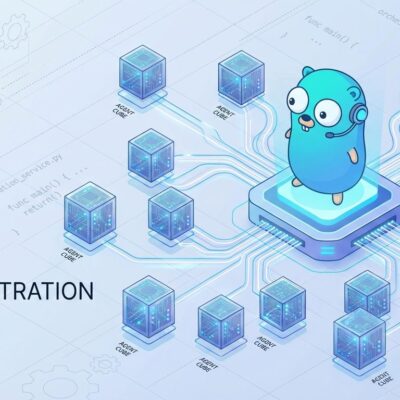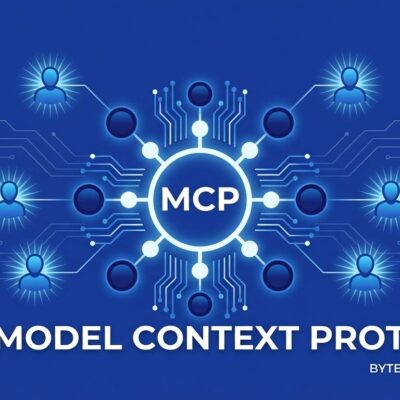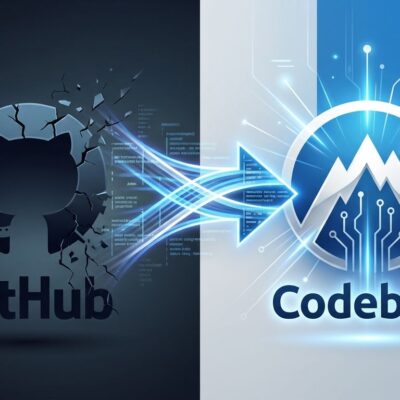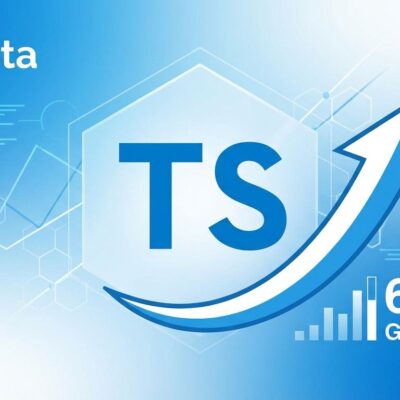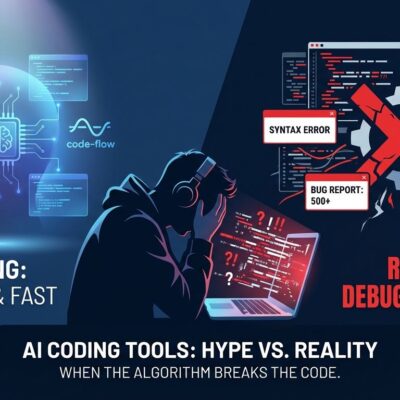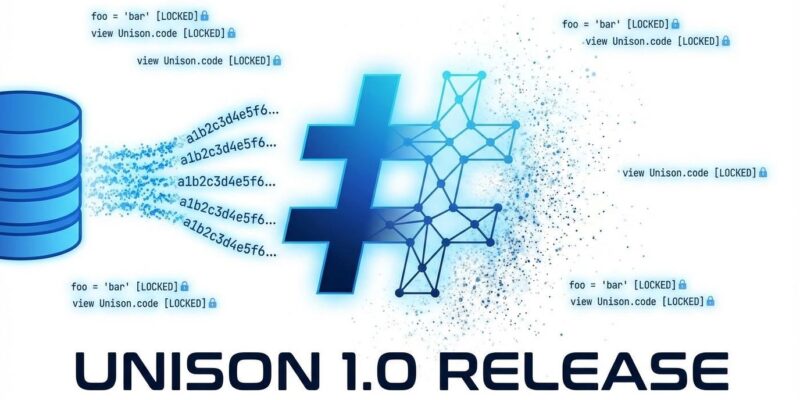
After six years of development, the Unison programming language hit version 1.0 on November 25, 2025, marking the first time a content-addressed language has reached production status. Instead of identifying code by human-assigned names like every other mainstream language, Unison uses SHA3-512 cryptographic hashes of the code’s syntax tree. Code lives in a SQLite database, not text files. The result? An entire class of dependency conflicts eliminated, zero time spent recompiling code you’ve already built, and distributed programming that actually works without Docker hell.
The functional programming community has been watching Unison since the 2019 alpha release, but 1.0 represents real maturity: 26,558 commits, 3,490 merged pull requests, and 152,459 library downloads from 1,300+ project authors. More importantly, Unison Computing runs their entire Cloud orchestration layer in Unison, proving the concept works beyond toy examples. When the team building the language trusts it for production infrastructure, that’s validation.
Content-Addressing Solves Dependency Hell, Adds Database Complexity
Here’s how it works: every function, type, and definition gets identified by a 512-bit hash computed from its structure plus all its dependencies’ hashes. Change one character in a function, you get a different hash—a completely separate definition. Names become metadata pointing to immutable hash addresses in the codebase database. Want version 1 and version 2 of a library simultaneously? No problem. Multiple versions coexist without conflicts because they’re literally different hashes.
The trade-off is real. Developers have spent 40 years perfecting text-based workflows: grep, diff, Git. Unison throws that out for a database-first approach. Yes, you get an append-only architecture like Git repositories. Yes, parsed and typechecked code stays cached forever. But “code in a database” scares people for good reason—it’s a paradigm shift most teams won’t accept.
The math is solid, though. At one million unique definitions per second, you’d expect the first hash collision in roughly 100 quadrillion years. SHA3-512 isn’t breaking anytime soon. Unison’s technical foundation is sound. The question is whether eliminating dependency conflicts justifies learning an entirely new way to organize code.
Production at Scale, Limited Beyond Unison Computing
Unison Computing eats their own dog food. Their Cloud platform—elastic compute fabric, distributed code execution, on-the-fly dependency deployment—runs entirely on Unison. The team describes it as “by far the most significant system written in Unison,” which is both impressive and telling. Six years in, the largest production deployment is still the team that built the language.
The ecosystem shows life: 139,811 published definitions, active development, LSP support across editors. But let’s be honest—this isn’t replacing Go or Rust. Unison targets functional programming enthusiasts building distributed systems, not mainstream web apps. The team admits “runtime performance isn’t great,” which rules out high-throughput systems. Check your performance requirements before betting on Unison for critical paths.
Distributed Programming Without Docker Scripts
Unison’s killer feature is trivial distributed programming. Write a function, specify where it runs using the Remote ability, and dependencies deploy automatically. No Docker setup. No Kubernetes YAML. No deployment scripts. The team demonstrated Spark-like distributed datasets in under 100 lines of code—try that with traditional tools.
Content-addressing makes this possible. Because definitions never change (immutable hashes), Unison can safely ship code across nodes without versioning nightmares. The runtime handles missing dependencies on-the-fly. Your application logic and infrastructure definition merge into one strongly-typed program.
Compare to the traditional stack: containerize your app, write deployment configs, manage service discovery, handle version compatibility, pray nothing breaks in production. Unison collapses that into “say where you want computations to run and it happens.” That’s not hype—that’s the production system Unison Computing ships.
Build Performance Revolution Meets Steep Learning Curve
Never compiling the same code twice is Unison’s other major win. Hash-based caching means once a definition typechecks, it stays cached permanently. Refactor names freely—the content hash doesn’t change, so nothing breaks. Multiple developers can modify different definitions without merge conflicts, even if files get reorganized.
The problem? Unison’s learning curve “competes with Haskell on mind-breaking concepts.” This isn’t Elm’s beginner-friendly functional programming. It’s advanced type systems, abilities for effect management, and a fundamentally different mental model. Mainstream developers won’t adopt this. Teams already comfortable with Haskell might, but that’s a small audience.
Key Takeaways
- Unison 1.0 proves content-addressed code can work at production scale—dependency conflicts actually disappear, distributed systems become simpler, build performance improves
- Production validation is real: Unison Computing runs their entire Cloud infrastructure in Unison, but six years in, adoption remains limited to the team and small functional programming community
- “Code in database” paradigm is too foreign for most teams—the trade-off between eliminating dependency hell and learning a fundamentally different workflow won’t appeal to mainstream developers
- Performance concerns are honest limitations: team admits “runtime performance isn’t great,” ruling out high-throughput systems and requiring careful evaluation before committing
- Influence over adoption is the real bet: like Git proved content-addressing for version control and Nix for packages, Unison proves it works for code itself—whether that reshapes future language design or stays niche is the open question



